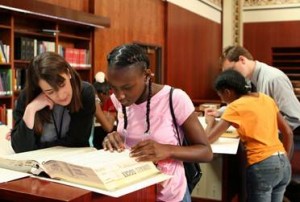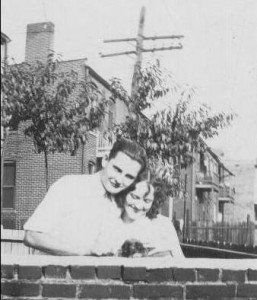Multicultural Wellston: A Changing Population
Wellston had its origins as estates for the landed gentry of St. Louis.
When mass transportation, subdivision, and industry came to the area, so too did working people from St.
Louis City as well as from rural areas to the south of St. Louis.
Later, German Jews began to move to the Wellston area. “Some [German Jews] were moving west,” says historian Neal Primm, “first to the nineteenth ward, then along Page and Easton Avenues toward Wellston, bringing their synagogues and Kosher markets with them.”
A huge shift in the population occurred in the 1950s. According to a study on population and housing in Wellston in 1960, many people of child-bearing age left the Wellston area between 1940 and 1960, taking not only themselves but also potential children and youth.
At the same time, the older population was increasing. New homes were not being built. Instead, most were more than 30 years old. Most residents had a grade school education or less and were blue collar workers. Most of the women worked in the home as homemakers, rather than working outside the home. There was a high rate of school drop-outs, and unemployment and income rates were about the same as the City of St. Louis.
The population was transient in nature: of those living in Wellston in 1960, slightly more than half had moved there since 1955. The population was still 90% white but was changing as the number of non-whites increased and the whites moved out further into St. Louis County.

Wellston students conducting historical research (Voices: Online Magazine of the Missouri History Museum)
While whites were moving further west into St. Louis County, African Americans were moving into the area from rural areas to the South – much as white Wellstonians had done before them. A number of African Americans also moved to the Wellston area when the project housing in which they had been living was demolished.
By 1970, 75% of Wellston’s population was black, 25% white. Today, Wellston is inhabited almost solely by African Americans.
Next.
